What is the cost of Civil Rights? To answer this question is not a moral defense of discrimination. It might be moral to support taxing white Americans in order to pay reparations to black Americans — still, that tax would represent a quantifiable cost.
My purpose is to show, as objectively and neutrally as possible, that DEI doesn’t matter at all and is a complete distraction from larger issues which remain untouched by both parties. Those on the right praising Trump for “defeating DEI” are the same who praise DOGE for “balancing the budget.” These are claims made in the absence of data, completely based on lies.
DEI is the least costly aspect of Civil Rights law. Trump’s ban on DEI benefits large corporations and immigrants, but offers little benefit to the white middle class, blacks, or the economy as a whole.
Here’s the summary right at the top:
RIOTS: (0.002% of Civil Rights Costs)
Race riots cost $100M per year.
JOBS: (0.7% of CRC)
Affirmative action, DEI, and employee litigation cost $37.9 billion per year.1
WELFARE: (12.3% of CRC)
Non-white welfare usage costs $627 billion per year.2
HOUSING: (16.5% of CRC)
The cost of Section 8 and zoning3 on housing is $913.7 billion per year.
TRANSPORTATION: (32.1% of CRC)
White flight4 incurs transportation costs of $1.64 trillion per year.
CRIME: (38.4% of CRC)
The criminal cost of Civil Rights is $1.96 trillion per year.5
TOTAL COST OF CIVIL RIGHTS: 21.8%
The maximum cost of Civil Rights is 21.8% of GDP, or roughly $5.1 trillion. This is similar to having an endless COVID Lockdown6 in California, Texas, Florida, and New York, assuming COVID caused a $16 trillion dollar loss (68% of GDP).7
Even if all riots, affirmative action, Civil Rights employment litigation, and DEI all ended tomorrow, the remainder of Civil Rights (welfare, crime, transportation, housing) would still cost 21.6% of GDP. Silicon Valley lobbying against affirmative action and DEI is a 0.2% drop in the bucket.
Ending DEI punishes the most talented blacks, and helps Indian/Chinese immigrants more than whites. Polemicists against “DEI” and “affirmative action” are serving corporate interests and immigrant ethnic mafias — not acting in the interests of white Americans.
The most destructive Civil Rights policies are in crime, transportation, and housing. If homeowners were freed from zoning induced by Civil Rights, the middle-class would see their cost of living reduced by 15% overnight.
White people would return to “inner cities” in a reversal of white flight. 10,000 lives per year would be saved due to decreased commuter accidents. The term “inner city” would no longer be associated with bombed-out warzones, but the “shining city on a hill.” The average American’s standard of living would increase dramatically.
Banks and investment firms who depend on Civil Rights to make a profit (keeping housing and car markets inflated) would go bankrupt. The housing market would crash, and Boomers would lose their life savings on their reverse mortgages. It would be a greater transfer of wealth than the COVID lockdowns or the Great Depression, from old to the young, from the banks to the middle class.
Peter Thiel, Bill Ackman, David Sacks and their far-right allies push the “DEI distraction” to protect their profits. DEI hurts Indian and Chinese immigrants. These special interests band together to form an effective anti-DEI political bloc. The political capital of white Americans is being diverted and expended on what amounts to a side-issue.
Affirmative action is a red herring. Banning affirmative action in Harvard Law School and Blackrock would not benefit or “trickle down” to middle class whites. The end of affirmative action has not led to increased white enrollment.
RIOTS: the cost of national unity.
The cost of riots is easiest to calculate, and represents the smallest direct cost. For a quantitative overview of all riots in American history, find my previous research here.
Racism decreases unity, and racial disharmony weakens national morale. Organizations like the Black Panthers represented a violent threat to peace and tranquility. Has Civil Rights done a good job of bringing the country together into a single American identity?8
No. There have been more deaths due to race riots after 1965 than before 1965. With universities offering “black graduation,” racial tribalism is on the rise, rather than disappearing. It's hard to argue, in the wake of George Floyd and Shiloh Hendricks, that things have “calmed down.” Activists seem more polarized, radicalized, unwilling to compromise, trigger-happy, and demanding than ever before.
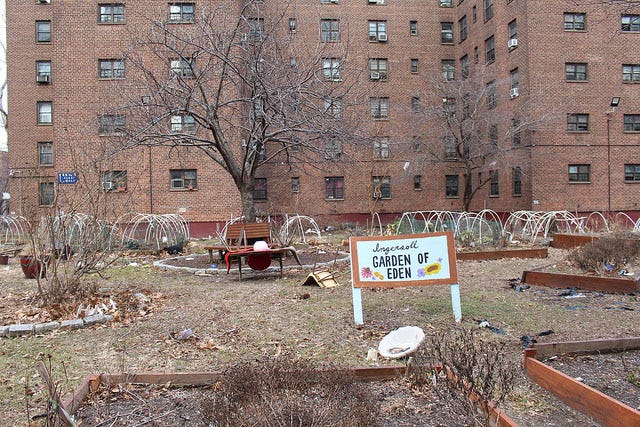
b. JOBS
part i: PhD wage inflation
Discrimination traps “untapped potential.” If blacks aren’t allowed to become engineers, there are fewer engineers. Racism harms the economy. Civil Rights unleashes black and brown talent. The argument for Civil Rights is similar to the argument for open borders. The flip side of this, however, is that legislating against discrimination costs money to enforce.
An entire legal field needs to be created, known as Civil Rights Law. In California alone, there are at least 2,352 Civil Rights lawyers out of 190,000 active attorneys. Assuming that this ratio holds true throughout the country, there are approximately 13,000 Civil Rights lawyers in the country.
Assuming the average salary of Civil Rights lawyers is $100k, Civil Rights litigation already costs America a total of $1.3 billion per year, before any damages are paid out.
The next thing to calculate is the way in which Civil Rights creates artificial demand for non-white PhDs, which artificially raises wages and can be considered a form of welfare and taxation.
In 2021, blacks with PhDs earned $4k more per year than whites with PhDs. It is possible that blacks with PhDs are smarter than whites with PhDs, or harder working, or have some other natural advantage. But this isn’t reflected by the data, where 83% of white law school graduates passed the bar on the first try, compared with only 57% of black law school graduates.
Using the results from the bar exam, we can see that not all PhDs perform at equal levels. Due to affirmative action and grade inflation, a black PhD performs at 68.7% of the competency of a white PhD. This is because black PhDs are not held to the same admission or graduation standards, and their grades are subject to ideological inflation.
Black PhDs earn 6% more than white PhDs, despite their performance being 31.3% lower. If black PhDs were paid equivalent to their performance, they would be paid $42,948 per year. The fact that they are instead paid $66,533 per year means each black PhD is receiving an “affirmative action boost” of $23,585 per PhD. This is because the government, through affirmative action, mandates hiring black PhDs. Since they are a scarce resource, this creates artificial demand for their labor, resulting in inflated wages, despite the fact that they do not create additional value (performance).
There are almost one million black PhDs in America. If we estimate that each of these million black PhDs has an artificially inflated wage of $23,585, this means that affirmative action represents a total cost of $23.6 billion when considering the performance gap among PhDs.
JOBS part ii:
What about non-PhDs?
Why focus on PhDs? What about non-PhD blacks who benefit from affirmative action?
First of all, non-PhD blacks typically earn less than whites, indicating that their wages are not artificially inflated. Second of all, there is economic loss associated with the “forced promotion” of doctors and lawyers. A poorly qualified doctor can botch a surgery or miss a diagnosis; a poorly qualified lawyer can result in a false conviction or allow a murderer to go free. “Forced promotion” of black PhDs has outsized consequences.
On the other hand, replacing a white K-12 teacher with a black K-12 teacher has a much smaller effect, if any at all. Most jobs which do not require a PhD are simply not very important at the scale of affirmative action, which only affects 20% of the workforce at most. Complaining about how “black DMV workers are only there because of affirmative action!” does not correspond to any real quantifiable damages to the economy as a whole.
In fact, there may be hidden benefits to affirmative action, like reducing crime and rioting. It’s not clear that giving black people 20% of available government jobs is reducing the critical competency or effectiveness of the economy, even if it makes the line at the DMV slightly longer. Affirmative action among Boeing engineers, however, deserves to be scrutinized.
JOBS part iii:
litigation and Demand Letters.
There are 6,500 Civil Rights cases per year according to the Department of Justice. How are there so few cases when there are more than twice that number in Civil Rights lawyers? How can 13,000 Civil Rights lawyers survive if each only of them only gets one case every two years?
The answer is that Civil Rights cases are not expedient. Both sides drag the case out as long as possible. The defendant is trying to avoid a trial (bad PR), and the plaintiff is hoping to make the process as long, torturous, and expensive as possible, to force the exhausted defendant to settle out of court.
Judges do not impose limits on either side for these practices, and cases do in fact take, on average, two years to process. Still, lawyers juggle more than one case simultaneously, so this still doesn’t explain why there are so many Civil Rights lawyers and so few cases.
The better explanation is that, instead of filing a case with the court, it is more common for Civil Rights lawyers to send threatening letters to companies. This letter, called a Demand Letter, threatens to file a case with the court if an out-of-court agreement is not reached. The company, wanting to maintain good publicity, chooses to settle out of court to avoid the bad publicity of being racist. Even if a corporation ends up winning a case, no one wants to read the headline, “Viacom being sued for racial discrimination.” It’s character assassination and slander at the corporate level, backed up by cultural capital and enforced by the state.
Most Civil Rights cases never reach the courts: instead, they are settled with non-disclosure agreements, hiding the details from the public. The majority of a Civil Rights lawyer’s time is spent sending Demand Letters and engaging in back-door “internal negotiations,” rather than hashing things out publicly in court. It is unknown how many of these Demand Letters are sent, but if each lawyer sent out 10 per year, that would total 130,000.
Back in 2013, 35,307 civil rights cases were filed. Civil Rights lawyers don’t take cases unless they are confident that the payout will exceed the cost of time, accounting for the possibility that not all cases are won. Assuming a minimum average litigation cost of $43,000, as well as a minimum damages awarded of $114,000,9 it is reasonable to conclude that Civil Rights lawyers are extracting $4 billion per year in damages from companies, in addition to their lawyer’s fees of $1.3 billion per year.
Civil rights cases made up 27% of all trials in 2016.10 From this number, we can hypothesize that 27% of a corporation’s legal budget is spent defending against Civil Rights legislation. The real number is likely much higher, because the 27% figure includes not only corporate litigation, but also litigation between individuals. Civil Rights litigation is directed toward companies, not individuals.11 In other words, 27% is an underestimate, because not all trials are corporate-level trials.
However, to avoid any over-estimation, assume that only 27% of a company’s legal fees go toward Civil Rights Defense. In 2021, companies spent a total of $23.7 billion on litigation. Assuming that 27% of this went to Civil Rights legislation, that means companies spent $6.4 billion on the defense against Civil Rights.
What exactly is the settlement rate for Demand Letters? When a Civil Rights lawyer sends a letter to a company threatening litigation, what percent of companies prefer to settle immediately with a non-disclosure agreement, rather than going to court? 98% of cases settle before going to trial. Even worse: this settlement rate only includes cases which are filed with the court; they do not include Demand Letters, which, when sent, result in an immediate NDA and payout.
To be conservative, the total corporate spending on all Civil Rights payouts, including filed court cases as well as “internal mediation” totals, at minimum, $12.8 billion. But, assuming that 99% of these cases are never filed, but “resolved internally” with NDAs, the figure may be as high as $64 billion.
JOBS part iv:
Preventative defense.
The cost of payouts does not include defensive measures taken by corporations. According to DEI consultant Sarah Cordivano, each Fortune 1000 company spends an average of $1.5 million per year12 on preventative defense against Civil Rights cases.
In total, Fortune 1000 companies spend $1.5 billion on preventative defense against Civil Rights cases. Adding this “preventative defense” of $1.5B together with total external and internal payouts of $12.8B, as well as the previously calculated “performance gap” tax of $23.6B, and these costs of Civil Rights in the jobs market come out to $37.9B.
So far, we have been throwing around these numbers without any frame of reference for the opportunity cost of Civil Rights. If we didn’t spend all this money preventing companies from being racist, what could we be doing with it instead?
Here’s a trolley problem: is Civil Rights worth the death of 9 million people per year?
It would cost $37 billion per year to end world hunger by 2030, and 9 million people die from hunger per year. That’s twice the number of people who died in WWII per year. This $37 billion only represents 0.15% of the total cost of Civil Rights.
JOBS part v:
qualitative loss of merit.
So far, the quantitative costs of Civil Rights have been measured. What about the qualitative, immeasurable, cultural, and even spiritual costs? Does Civil Rights destroy the American Dream of meritocracy, decrease trust in institutions, and enshrine a caste system built on victimhood?
What are the limits of Civil Rights laws? If the medical profession isn't 13% black, and there aren't enough qualified black doctors, is the solution to lower standards for black doctors, to reach parity? That is an artificial kind of parity, since no one would argue that the economy is improved by lowering standards in education and certification. Achieving real parity is impossible through affirmative action, so long as educational gaps persist.
Another idea is to say, "if there are only 1,000 blacks who pass the medical exam this year, we can only allow 8,000 whites to pass." This would create an artificial shortage of doctors. This is occurring in Ivy League admissions, where qualified white students are being denied entry in favor of black and Hispanic students, and told to apply elsewhere.
The inability of universities to articulate clear and well-defined standards for admission is a direct result of affirmative action policies. Grade inflation, Bush’s “No Child Left Behind,” and “the college essay” are all ways for schools to avoid meritocratic admissions in favor of race-based admissions. Even if this has a negligible economic impact, the cultural implications cannot be ignored.
HOUSING:
Civil Rights vs Georgism.
Civil Rights is responsible for the “housing pincer”:
Section 8 and NIMBYism artificially inflate housing prices by 20%.
This costs Americans $4,886 per capita per year.
For 187 million white and Asian Americans, the total cost is $913.7 billion per year (3.59% of GDP).
56 years since the Fair Housing Act of 1968, this cumulative cost could be as high as $51.2 trillion.
The costs of white flight include cost and stress of moving; family separation; the health effects of longer commutes; the reduction in wages and job opportunities that come from de-urbanization.
Without the “pincer,” housing would be cheaper. Welfare spending could be increased by 83% without expanding the federal budget.
The biggest beneficiaries of Civil Rights were real estate speculators. Civil Rights was a form of “reverse Georgism.”
Georgism is an economic philosophy which states that the only tax should be on undeveloped land. It gets a bit tricky to figure out what exactly undeveloped land is — if you let a farm rest for a year, does it become undeveloped? If the barn on the farm is damaged, is it undeveloped? If you put a solar panel on an acre of land, does that count as “development?” The specifics of Georgism get a bit pedantic at the margins. But, the broad point of Georgism is that as the tax on undeveloped land goes up, “land speculation” will go down.
When I was a libertarian, I didn't believe in words like “speculation.” As far as I was concerned, someone has the right to buy and sell whatever they please. “Bubbles” and “speculation” are normal parts of a health market, and trying to regulate them out of existence does more harm than good. I didn't even believe in insider trading — I thought, if I had some secret information I tell my friend, and he does well, where's the harm? Who's the victim of this crime?
I'm not a libertarian anymore, but I understand why libertarians have trouble with the concept of “speculation.” To my non-libertarian friends, let me briefly explain the concern.
Land speculation is a bit like crypto, or NFTs. Let’s say someone makes a Bored Ape. You buy this Bored Ape, not because you're using it, not because it does anything for you, but because it seems like a good or safe "store of value." You hold onto this Bored Ape, because you anticipate that someday, it will be worth a lot of money to someone else. This is a bit of a Ponzi scheme.
Land is obviously not just a “store of value” — it can actually be used to produce food, or as space for residential housing. Land has minerals in it, like diamonds, or oil or shale; it even has pretty geodes you can find at the crystals store to buy to make your mom happy. Land can be used for a lot of other things than just a "store of value."
In fact, according to Georgists, land is the only valuable thing in the world. Without land, there's no where you could build a factory. Without land, you couldn't sleep in a bed; without land, there would be no food; without land ownership, who would have rights to cut the trees for lumber?
But Georgists were against land speculation. They believed that the fundamental driver of economic growth was land development. The more houses built, the more crops planted, the more diamonds mined, the more trees cut, the more factories erected. If land development is the ultimate good, then land speculation is the ultimate evil. Speculators hold onto land, doing nothing with it, waiting until someone buys it from them at a higher price. Georgists wanted to see land used as quickly as possible, not to sit around as some rich guy's lazy and "safe" investment. Georgists wanted to promote maximum risk taking, entrepreneurialism, employment, and development.
Georgists sought to punish land speculators by taxing them. For example, imagine you're a rich kid, and your father gives you a million acres of land in Kansas. He says to you, "son, someday, as America becomes richer and richer, all of the other places in America will be all used up, and someone will come to you asking to buy the land. Wait till the price goes up enough, then sell it." You and all the other rich families keep buying more land, adding more to the pile, until all the unused land is bought up. It's sort of like the parable of the grain in Egypt, where Joseph hoards a bunch of grain, and when the peasants start starving, he's able to charge higher prices and make a killing.
Land speculation can be thought of as land hoarding, or forming a kind of land monopoly. Of course, no one owns all the land in America, so it's not a literal monopoly at the national level, but at the local level, land ownership is inherently monopolistic. For instance, if a drug store is selling overpriced goods of poor quality, I can build my own drugstore next door to compete with them. However, if someone owns a million acres of land in a particular area, and I want to buy some of that land, my only options are to agree to the price as set by the seller or to go elsewhere. Sometimes it's difficult to go elsewhere because of family ties, transportation costs, or an ancestral tie to a specific area. Sometimes you don't just want to abandon your home and go somewhere else. Besides, if every rich person in every state is buying up land, they are decreasing the national supply, and that increases the price everywhere. Effectively, you run out of places to go.
The solution of Georgism is to tax undeveloped land. How exactly that would work is not entirely clear to me. It also seems like there are some environmental concerns. Don't we want some land to remain virgin, pure, and under conservation? There might be a way to iron out these technical details, and it's not my place to promote Georgism. Rather, my point here is to contrast Georgism with Civil Rights.
Under Georgist Rights, if you owned a million undeveloped acres, you would be taxed millions (billions?) per year. Your incentive would be to sell this undeveloped land as fast as possible. The pressure to sell immediately would drive down the price. All of a sudden, previously landless peasants would be able to buy cheap land for $1 an acre, and start building their own homes. The effect would be a huge wealth transfer from speculators to the middle class.
Civil Rights, on the other hand, does the opposite. It taxes the most developed parts of the country, and represents a massive wealth transfer from the middle class into the hands of land speculators and real estate developers.
From 1848 to 1956, America underwent a massive industrial expansion. First, wealthy industrialists began building railroads, connecting California to New York. Second, auto manufacturers like Henry Ford lobbied the government to build roads and bridges to increase accessibility for cars. Third, America entered the World Wars, which required factories to be commissioned for the production of armaments, including tanks, bombs, shells, and armored vehicles. Many of these were sold or gifted to Britain and the Soviet Union.
The result of this industrialization was a mass internal migration of black Americans out of the South into cities like Pittsburgh, Detroit, Chicago, Milwaukee, St. Louis, Philadelphia, Cincinnati, Buffalo, Cleveland, Columbus, and Boston. However, by 1956, this phenomenon of massive black migration did not result in the peak of “white flight.”
White flight actually peaked between 1960 and 1980. Why would this be the case? If whites were merely fleeing the mere presence of blacks out of sheer racism, wouldn’t whites have fled already when black migration began in earnest, in 1917, and wouldn’t white flight have leveled off when black migration slowed down, around 1946?
The presence of blacks in northern cities cannot explain white flight. Instead, it was desegregation between 1954 and 1977 which resulted in white flight. White flight wasn’t the result of the mere existence of black people, but it was a result of the coercive force demanded by federal courts to overturn local government policies.
The result of white flight was a necessary increase in the price of suburban land. As whites fled cities, the increased demand for suburban housing rewarded real-estate speculators and resulted in massive profiles.
f. HOUSING:
malicious neglect.
Since the 1990s, racial segregation has generally been increasing, not decreasing. The black population is not increasing. How would the suburban real-estate scheme repeat itself, if there are no industrial jobs to attract blacks into cities?
The motivations behind white flight were not changing demographics, but changes in law. Similarly, the motivations behind those fleeing San Francisco and Los Angeles is not the “existence” of criminals or vagrants, but the lack of enforcement of existing law.
The number of criminals has not increased among any race of people. Americans today are fatter, slower, more effeminate, with lower grip strength, and lower levels of testosterone than ever before — across all races. To compensate for this decline in criminal behavior, the suburban real-estate scheme has employed malicious neglect.
Malicious neglect refers to the manner in which urban cities refuse to enforce laws. The result is thieves and violent offenders released repeatedly onto the streets, sometimes 80 times in a row, without ever serving significant jail time. Vagrants set up tent cities, openly inject needles in full daylight, defecate on sidewalks.
This malicious neglect results in suburban flight. This is reminiscent of white flight, but is even more divorced from demographic shifts. The suburban flight from San Francisco cannot be blamed on blacks, or even Hispanics, but is entirely a result of the malevolent neglect of the police chiefs, prosecutors, District Attorney, courts, judges, and local government.
Just as we could imagine President Johnson to be a “true anti-racist,” it is popular to imagine that all of the functionaries pushing malicious neglect are “true believers.” Republicans and conservatives are convinced of this, because all of the actors involved are invariably Democrats. But the Democratic Party has been winning the urban vote since the 1960s.
There is a complicated relationship between ideology and policy. The masses are propagandized to produce certain ideological outcomes. If we need a war in the Middle East, Islamophobia is popularized. On the other hand, policy often exceeds the ideological limits of what is popular, as when Brown v. Board was enforced at gunpoint and led to a significant third-party revolt.
Here are three overlapping possibilities:
Real-estate investors boost or support Democratic ideology when that ideology overlaps with their own cynical interests.
Real-estate moguls are driven by motivated reasoning to embrace Democratic ideology. They truly believe in it, and support the Democratic Party.
Real-estate elites are willing to support any party that engages in malicious neglect. It just so happens to be the Democratic Party, but if it was Republicans, they would happily support bans on abortion and gay marriage, if that would accomplish their goals.
The effect of malicious neglect is to drive middle class and even upper middle class residents out of cities like San Francisco. The result is an increase in suburban demand, nationwide. Idaho, North and South Carolina, Georgia, Texas, and Florida are all net beneficiaries of malicious neglect. Within states, cities like Atlanta expand infinitely in all directions as a result of malicious neglect.
Malicious neglect, in concert with Civil Rights law, produces extreme zoning. Zoning is effectively a method to overcome Civil Rights law by pricing out buyers from the market, and maintaining a desired demographic. As malicious neglect increases, zoning increases, and the two work together to price out buyers, forcing them into suburbs. The net effect is to increase the cost of rent and real estate in urban areas as well as suburban ones, resulting in trillions in unearned profits.
Whereas the Democratic Party drives malicious neglect, the Republican Party is often guilty of promoting zoning laws as a “solution.” This is often referred to as NIMBYism. Of course, NIMBYies exist on the left as well, but this point is important to highlight. Instead of stopping the process, Republicans participate and facilitate it. They “give the Dane his Danegeld” by driving up costs artificially with zoning and redistricting.
The net result is a massive wealth transfer of trillions away from middle class families into the pockets of real estate investors. It is also effectively a transfer of wealth away from Millennials into the pockets of Boomers, who bought their houses in the 1980s. This scam has been going on for 70 years, and there seems to be very little political will on the horizon to put a stop to it.
Boomers are an extremely powerful voting bloc. If you wanted to deconstruct Civil Rights, Boomers would instantly lose 20% of their wealth as real estate prices would crash. Civil Rights is effectively defended by the two most recalcitrant, self-interested, and stubborn voting blocs in America: old white people, and minorities. Against those forces, there is no democratic solution.
TRANSPORTATION
The increase in vehicles per person between 1950 and 1980 was driven by suburbanization resulting from forced desegregation, known as “white flight.” When the term “white flight” is used, it can also include Asian Americans who work in cities but live in suburbs due to Civil Rights legislation.
Civil Rights, in forcing white Americans into longer commutes, transferred wealth from white commuters into the hands of oil, gas, car companies, and auto unions.
At maximum, 144.25 million cars have been purchased as a result of Civil Rights. [Comparing the number of cars in 1950 to those in 1980.]
This number may seem excessive, but is reasonable when compared to European car ownership, as the European market is not yet inflated by white-flight suburbanization.
In rural America, car ownership is necessary independent of Civil Rights. However, only 13.8% of Americans live in rural areas, and this percentage has been decreasing throughout the 20th century. Meanwhile, urban areas have experienced a desirability crisis, due to increasing costs (zoning), crime, and vagrancy. This creates inflationary demand for automotives, despite the fact that it has become much cheaper to build a car in the last 70 years.
The costs of Civil Rights commuting:
Civil Rights causes white flight, which increases commute times. This artificially increases the demand for cars, driving up both the cost of sales, repairs, and maintenance. It also increases demand for gasoline, which could cause environmental damage, and increases damage to roads.
Over the course of a lifetime, the average American will buy three cars. The average price of a used car is $29,300; the lifetime cost is $95,225. Excess lifetime car sales due to suburbanization total $4.23 trillion.
The average car lasts 12 years; a total cost of $352.5 billion per year. [Dividing 4.23 trillion by 12.] This is higher than the used car market, at $195.8B per year. [The used car market does not capture the purchase of new cars, which are preferred by some middle class commuters for their reliability and warranty.] The total car market is $558B, hence, the middle figure of $352B will be used here.
The cost to maintain a car is $887 per year. The total cost is $127.9 billion.
Gas costs drivers $3,000 per year. White flight results in excess gas spending of $432.8 billion per year.
Environmentally, 1,000 gallons of gas produce 20 tons of Greenhouse Gases (GHG). If the environmental impact of GHG is valued at $190 per ton, then each driver has an environmental cost of $3,800 per year. White flight contributes an environmental cost of $548.2 billion per year.
The cost of road maintenance range from $51.4 billion to $231.4 billion per year. Assume commuting due to Civil Rights makes up 10-50% of road damage. Averaging these assumptions, Civil Rights costs $25.7 billion per year in road damage.
Average one-way commute time is 26 minutes. Assume half of this is due to Civil Rights. For 187 million Asian and white Americans, the time lost is 0.43 hours per day, and 112.7 hours per year. In total, 21 million hours are lost yearly to Civil Rights commuting.
At a minimum wage of $7.25 per hour, $152.8 billion is wasted per year on Civil Rights commuting. If the average wage of $28.16 is used instead, then $593.5 billion is wasted on Civil Rights commuting.
The total cost of Civil Rights “transportation costs,” including $152.8 billion in commuting time, $25.7 billion in road damage, $548.2 billion in environmental costs, $432.8 billion in gasoline, $127.9 billion in maintenance costs, and $352.5 in sales costs, comes out to $1.64 trillion per year (7% of GDP).
Crime.
The racial distribution of crime has been done to death. 13/50. Ironically, the most convicted biological determinist would declare that Civil Rights has nothing to do with black crime. According to a biological determinist, blacks cannot be deterred from crime, because they are “like animals,” with low impulse control, high testosterone, low IQ, high aggression, and they don’t consider the consequences of their actions. No amount of policing can decrease black violence.
However, most intelligent people are not biological determinists. They acknowledge that criminal behavior is at least partly influenced by the environment. If this is the case, the question becomes, what has been the effect of Civil Rights on policing?
This is a more difficult question to answer, because it is not, strictly speaking, a legal question. Unlike affirmative action policies, or anti-discrimination policies, there is no federal mandate to limit police actions against blacks specifically. Whereas a company can be fined for not hiring black people, it is harder (and less common) for the federal government to fire cops for arresting black people.
Some striking, but anecdotal, events come to mind. When George Zimmerman was arrested for the killing of Trayvon Martin, it seemed as if Zimmerman was being targeted as a “white man” implicated in the killing of a “black child.” Darren Wilson was later attacked by the media for the killing of Michael Brown. Finally, Derek Chauvin was convicted for the killing of George Floyd.
Each of these media campaigns and subsequent riots represents a coordinated effort to demonize “white cops.” The result has been that prosecutorial immunity has been eroded, and cops have resigned at record rates.
Still, the question remains: is this a legal artefact of Civil Rights, or a result of changes in religious, cultural, or political attitudes? In each of these three cases, there were two parties which determined the outcome: the judge and jury. The judge has the power to exclude certain evidence from admission, and alter the decision making process of the jury. A jury, on the other hand, can always “nullify” a conviction if they are unanimously morally opposed to the charge on principle.
In the case of Derek Chauvin, Judge Peter Cahill seemed to be conservative, and criticized rioting. A juror, on the other hand, was spotted wearing a BLM hat while participating in a march in DC. Could such a juror ever be expected to declare Chauvin not guilty?
Again, the question at hand is whether or not Civil Rights legislation itself caused the jury’s decision against Chauvin. Chauvin wasn’t sentenced for a Civil Rights violation, but for murder. Legally, such a conviction could have been obtained in 1930, given a sympathetic enough jury.
It is difficult to disentangle the legal regime of Civil Rights from the cultural and political movement of anti-racism. However, if Civil Rights was legally abolished tomorrow, there would still be activist jurors capable of sending police officers to jail for murder. It is not clear that abolishing Civil Rights law would have any immediate effect on the ability of police to go hard on crime.
Putting aside the issue of culture vs. law, what would the black crime rate be if American jurors were more racist? What if American police were allowed to go hard, as they did in the 1920s?
One way to assess homicide rates is to look at homicide deaths. Because not all criminals get caught, a simple count of prosecuted murderers will undercount the true rate. But since it is easier to find a victim of a stabbing or shooting than to prosecute a criminal, the number of homicide victims gives a much more accurate picture of the true murder rate.
Since most crime is intra-racial (white on white, or black on black), the black homicide rate provides a decent picture of the black murder rate. Between 1910 and 1960, the black homicide rate varied between 20 to 40 out of 100,000. After 1960, it still fluctuated between 20 to 40 out of 100,000. The black crime rate in 1930 was much higher than the black crime rate in 2024.
It could be argued that if police were allowed to be more aggressive, or if blacks got longer prison sentences, the homicide rate could be even lower, around 10 out of 100,000. This is possible, but there’s no evidence for this counterfactual. Instead, the evidence paints a different picture: policing in 1910, in 1960, and the years 2000-2014 was “optimal.” During those periods, black crime reached a low.
This can be explained in a few ways:
In 1910, blacks had not yet begun the great migration into northern industrial cities.
Urbanization, ghettoization, and culture shock gave rise to an “immigrant culture” among southern blacks as they adjusted to a northern way of life. They were exposed to the Italian, Irish, and Jewish “gangster” culture, and emulated this example. The lack of Southern norms (like Jim Crow) led to an explosion of black crime. This peaked after 1935.
During FDR’s administration, the black crime problem was solved. Whether this was due to the decline of “culture shock,” economic improvements, or more effective policing is not clear. This downward trend continued until 1960.
After 1960, the crime rate exploded. The threat of Civil Rights lawsuits against police departments led them to stop policing effectively. Blacks were “emboldened” by Civil Rights, and the increase in crime coincided with cultural and political aggression (symbolized by pro-rape-advocacy among the Black Panthers).
In the 1990s, Bill Clinton seems to have saved the country with the Violent Crime Control and Law Enforcement Act of 1994, although the peak was already reached under Bush Sr. Bush fought the Rodney King Riots in 1992 with the National Guard, and the glorification of “rooftop Koreans” seemed to symbolize a new “anti-racist” opposition to black violence. Record low crime rates were maintained until Obama.
How did Obama increase black crime? Was it by emboldening a culture of aggression, and anti-white hatred? (If so, how would this explain an increase in black-on-black crime?) Was it by hamstringing the police, and threatening them with Civil Rights lawsuits? Was Eric Holder undermining local cops, even as he was criticized by Civil Rights groups for siding with cops?
Another explanation has little to do with Civil Rights or race specifically, and more to do with policing generally. It is possible that the police, after 2014, simply became less effective. The Ferguson Riots in 2014 did lead to resignations, and did seem to embolden criminals. That boldness was not against white people generally, but against cops specifically. In the aftermath of the Ferguson riots, which was the largest riot since 1992, criminals may have begun to perceive the police as weak or ineffective.
The response of the police was not to crack down, but to lay back. The negligence of the police seems to have less to do with the threat of Civil Rights lawsuits, and more to do with the fact that the police, just like doctors and lawyers, are less accountable and held to lower standards than ever before.
In the past, when police were accountable to their local community, riots like in Ferguson would not be tolerated. However, as the policing profession has been dragged through the mud, those who become police officers have less pride in their career, and view it as a mere job. This can be seen during school shootings where, instead of rushing in to save the lives of children, they hide like cowards behind their police cars.
The culture of anti-racism, and its vicious attacks on police as a class, may have started the process of institutional degradation within the policing profession. However, every institution seems to be subject to this spirit of feckless negligence: congress, the church, doctors, lawyers… Where has courage gone? Where is duty and sense of purpose? When did every job become a series of cynically checked boxes, and fake HR-speak? When did people stop being real, and stop caring about their fellow countrymen?
This decline in social cohesion, trust, and duty is a result of the collapse of the American identity. Mainline Protestantism, the bedrock of the nation, lost out to a menagerie of kooky Evangelicals, snake-handling Pentecostals, fedora atheists, Catholics, Jews, agnostics, and even Buddhists and Hindus. As America lost its identity and sense of destiny, this spiritual degradation trickled down to the average cop, whose first concern was now his own safety, rather than the safety of his community.
Furthermore, policing has been attacked on pacifistic grounds as an inherently dirty profession. Whereas doctors, lawyers, and even politicians still hold some honor among educated liberals, cops are reviled as filthy pigs who are morally corrupt. When the country remembered that its founding was forged in violence, this pacifistic view was not so prominent. As John Winthrop, George Washington, and General Custer lost their prestige, a culture of pacifism began to strip the police of their honor. Honor is the only force which can motivate a man to lay down his life for friends, let alone strangers. Without honor, the police are nothing more than a gang of box-checking mercenaries.
This is a fundamentally spiritual problem, which has little to do with racial conflict. As such, I am inclined to exclude crime from this analysis. It is possible that without Civil Rights, blacks would even be more ghettoized and violent. Intelligent criticism and feedback on this section is appreciated, especially as it pertains to the history of federal pressure campaigns against police.
The city of Baltimore stands out especially as one which was once feared for its police brutality, but now seems to stand in line with other Democratic norms. Why did that transition take place? This article is not entirely complete without a full historical analysis. However, since it already stands over 10,000 words, I choose to publish it in this questionable form, hoping that the other subjects have been addressed in a more thorough way. It is published as “in-progress,” and this is a field of research which needs more discussion and debate for my own edification and clarity. I welcome debate, outside of hysterical insults, “you’re anti-white!,” etc.
Conclusion
Excluding crime from the analysis, it is clear that transportation is the biggest cost of Civil Rights. Desegregation led directly to white flight, which resulted in environmental costs, increased use and maintenance costs for roads, increased consumption of gasoline, increased demand for vehicles (which inflates the price of cars), a greater burden of repair costs for vehicles, a greater amount of commuting time, the splitting up of communities and families, and the loss of historically white spaces. Some of these costs can be measured, but others cannot.
After transportation, the increased cost of housing and welfare take 2nd and 3rd place respectively. The cost of housing depresses the middle-class. This is a transfer of wealth from younger workers to Boomers, whose equity inflates due to zoning. Zoning works together with Section 8 in a “pincer” maneuver. Democrats forcefully integrate neighborhoods with Section 8, and NIMBYs respond by driving up the price of housing artificially to “keep the neighborhood nice.”
Zoning is a form of financial segregation which replaced explicit racial segregation. Zoning is a tax that whites must pay to live in white majority neighborhoods to circumvent Civil Rights. Zoning is the tax that whites pay to practice their traditional way of life, much in the same way that Muslim rulers forced Christians to pay “jizyah.” Unfortunately, rising housing prices not only hurt whites, but blacks too. Forceful integration of neighborhoods accounts for 79% of the costs of Civil Rights, since it resulted both in suburbanization and zoning.
The remaining 21% is split between “jobs” (DEI, affirmative action) and welfare. Welfare serves an important function: it keeps people from starving, going homeless, or losing access to healthcare. It is fascinating that conservatives are relentless in their attacks on welfare and DEI, even though this only represents 21% of the costs of Civil Rights.
Anti-welfare conservatives prefer to watch black people starve or bleed out homeless on the street than provide food, shelter, and medical care… rather than ever challenge the legality of housing discrimination laws.
From the perspective of rich whites, housing costs are not a problem, despite the fact that artificially inflated housing costs represent a huge drain for the total economy. This is because there is a significant amount of money to be made for the investor class (Boomers) from artificially jacking up the price of housing. Rich people, old people, and minorities are all united on this front. The fact that it is one of the worst attacks on young working people just trying to start families doesn’t matter.
If a potential 50% crime increase is included in the analysis, then it becomes the single largest category of cost. Still, 48.6% of the cost is still associated with housing and transport. Only 12.3% of the cost is associated with welfare.
Footnote on healthcare:
One of the areas of the economy where whites are net takers rather than net payers is healthcare. In 2018, when whites were only 60% of the population, they represented 70% of the top spenders in healthcare. This is because the vast majority of old people are white.
Among young people (<30), blacks and Hispanics have worse health outcomes than whites, and are less likely to be insured. When the population of old white people begins to decrease, healthcare will become more of a Civil Rights issue, with white taxpayers funding the healthcare of blacks and Hispanics. However, for the time being, whites as a race are a net drain on the system.
Since healthcare makes up 17.3% of GDP, the cost of old white people is worse than all minority crime in America put together. 97% of healthcare spending goes toward the “sick half” of America, while the “healthy half” of America only spends 3% (but shoulders the burden through distributed costs).
Thank you for reading.
I started writing this post back in August of 2024, so I’ve been working on it for nine months. If you read the whole thing, thank you.13
Affirmative action, $23.6B per year; a litigious tax on businesses, $14.3B per year.
Welfare and the cost of Civil Rights have been growing year over year. However, some of the increase in costs is due to the expansion of these programs beyond their original focus. While welfare spending is higher in 2024 than 1935, the number of people on welfare has also doubled from less than 30% of the population to over 50% of the population. So while the total burden has increased, the cost per person is more stable over time.
I am assuming that zoning is a tax paid to circumvent the Fair Housing Act of 1968. Some zoning might still exist even if racial discrimination were legal.
I assuming that without Civil Rights, there would be no white flight. White flight leads to suburbanization, which increases commuter costs and infrastructure load.
The cost of crime in America is $5.76 trillion. Criminal activity includes theft, murder, vandalism, intimidation, human trafficking, and results in death, addiction, intergenerational trauma, NIMBYism (segregation tax), and white flight (transportation tax). Blacks and Hispanics perpetrate 68% of crimes. Without Civil Rights, I assume their crime rates would be 50% lower. This is the most speculative aspect of this article, since it is difficult to know exactly how much a removal of Civil Rights law would impact criminal activity, and 50% is a very rough estimate.
Civil Rights established a legal precedent for the COVID Lockdowns by removing rights of association and property, as well as state and municipal control of education. The Lockdowns caused a $5 trillion dollar wealth transfer (19.65% of GDP).
This number cannot represent wealth transferred from Americans to billionaires, since much of the wealth increase was due to investments in other countries. But $5 trillion can be estimated as the maximum possible damages, considering quasi-immeasurable damages to mental health and social life.
Deaths, sickness, unemployment, lockdowns, etc.
There is no non-ethnic American identity to assimilate into, outside of the love of prosperity (money). In the 1970s, Christianity could have served this purpose, but with the decline of Christianity in the last 20 years, this possibility seems to be slipping away.
I am drawing here extensively from government statistics: https://bjs.ojp.gov/content/pub/pdf/crcusdc06.pdf
“Going, Going, but Not Quite Gone: Trials Continue to Decline.” Judicature.duke.edu, 1 Dec. 2017, judicature.duke.edu/articles/going-going-but-not-quite-gone-trials-continue-to-decline-in-federal-and-state-courts-does-it-matter/#easy-footnote-bottom-57-2373. Accessed 12 July 2023.
The exception is discriminatory housing practices, which can occur if a white homeowner refuses to sell to a black buyer; however, these are now exceedingly rare. 89% of homes are sold by a realtor, not by individual owners.
The source she cites is no longer available, but can be found via Wayback machine:

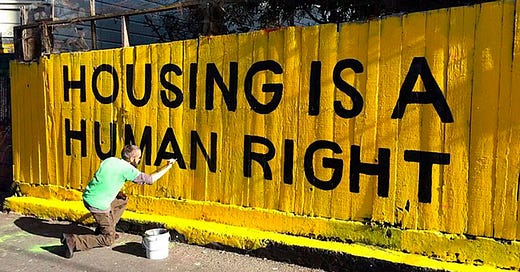


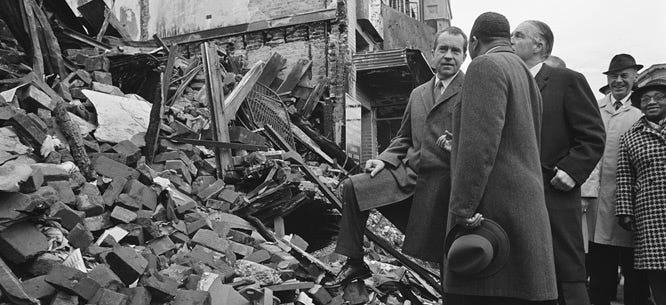
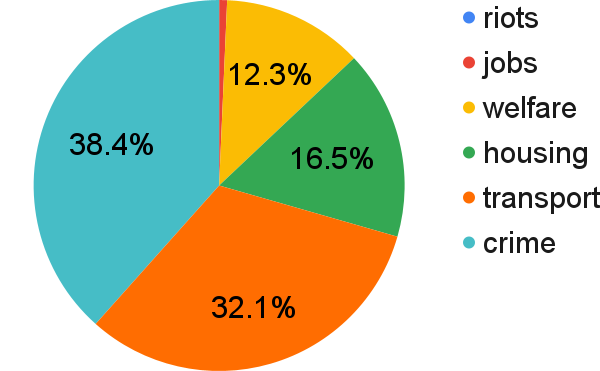



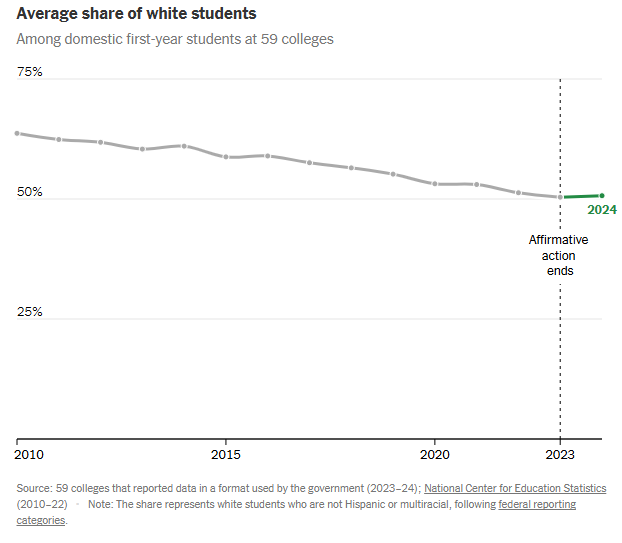
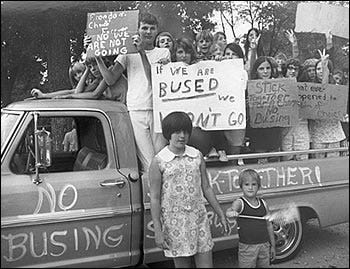

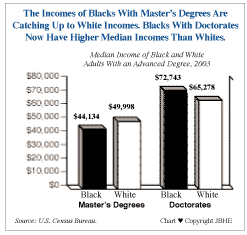

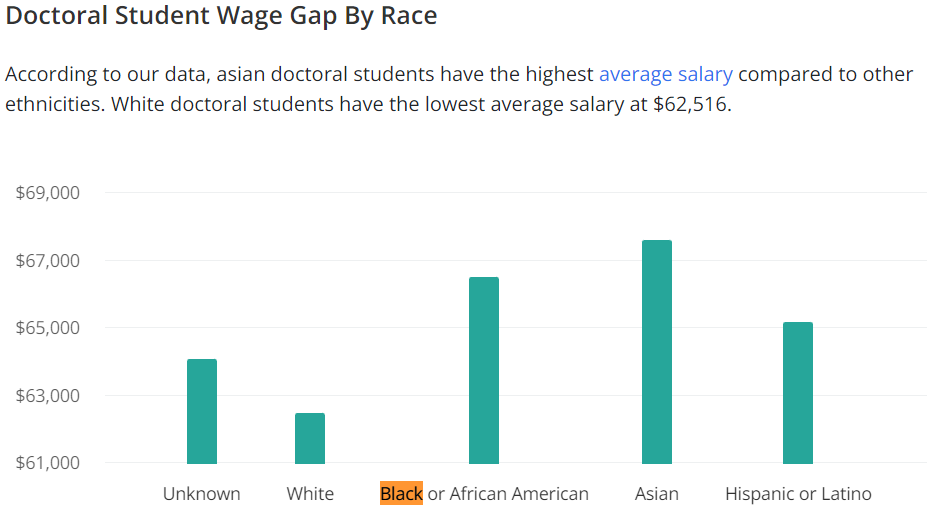



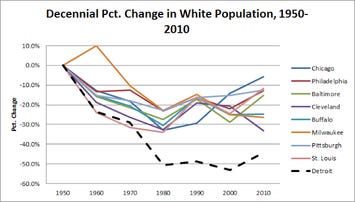

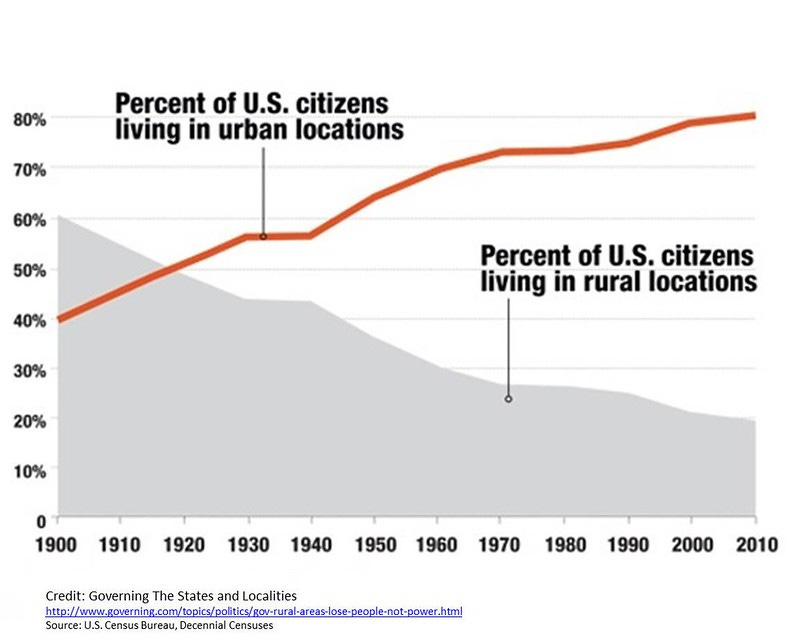

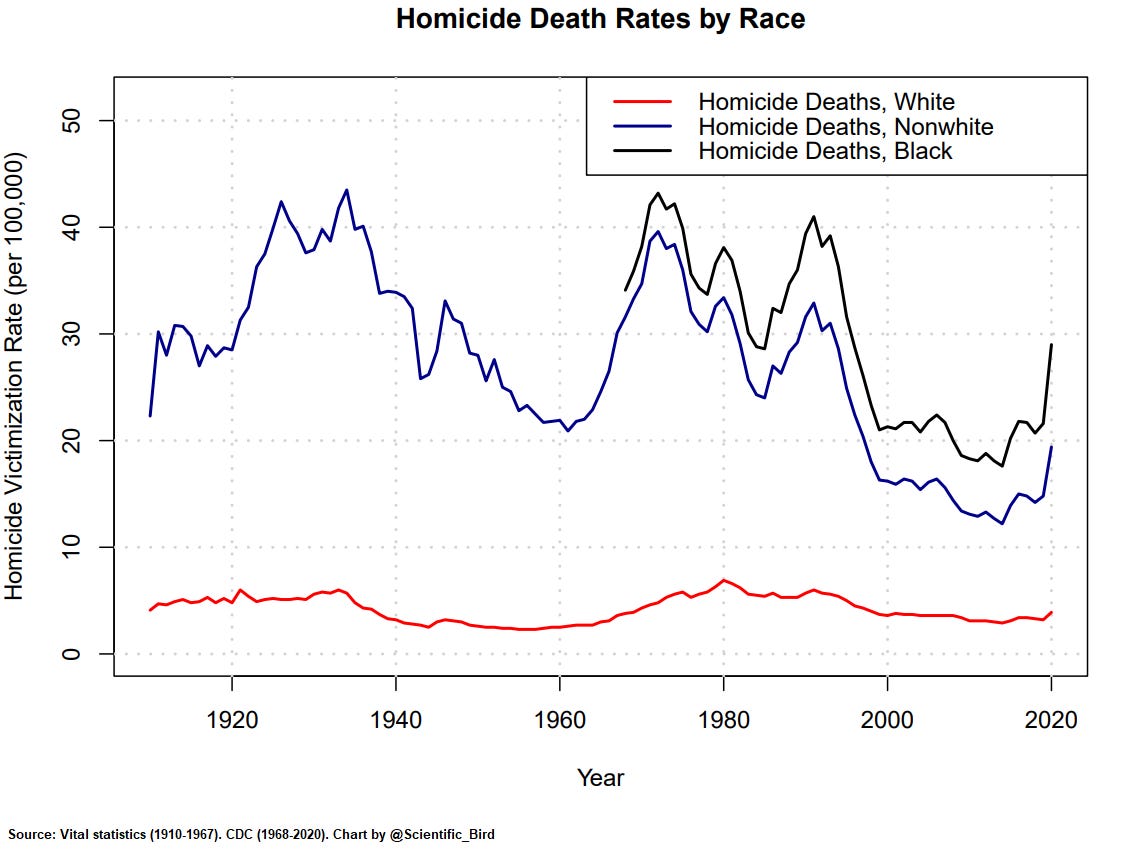




Epically well-researched article. You got me with the clickbait title lol
This article seems to blame Civil Rights for problems that were caused by racism (and the legacy of chattel slavery, which is still responsible for much of the generational wealth gap between Blacks and Whites). We have had centuries of overt racism and a few decades of mostly performative and weak attempts to legally ameliorate racism, ergo, many of the costs you cite are better explained by racism. For example, the housing and transportation costs you discuss are due to Blacks fleeing the south to get away from lynchings and violent overt discrimination, and clustering in Northern cities, where redlining laws prevented them from buying property in "nice" neighborhoods. Subsequent white flight happened because a) some of these artificial discriminatory laws were lifted and b) white people were too racist to live near Black people. Decades of housing discrimination accompanied by white racism is clearly the problem. The costs of racism are also high in terms of lost talent and knowledge. Crime rate differences can largely be explained by poverty and a lack of opportunity resulting from aforementioned housing discrimination and centuries of wage theft.